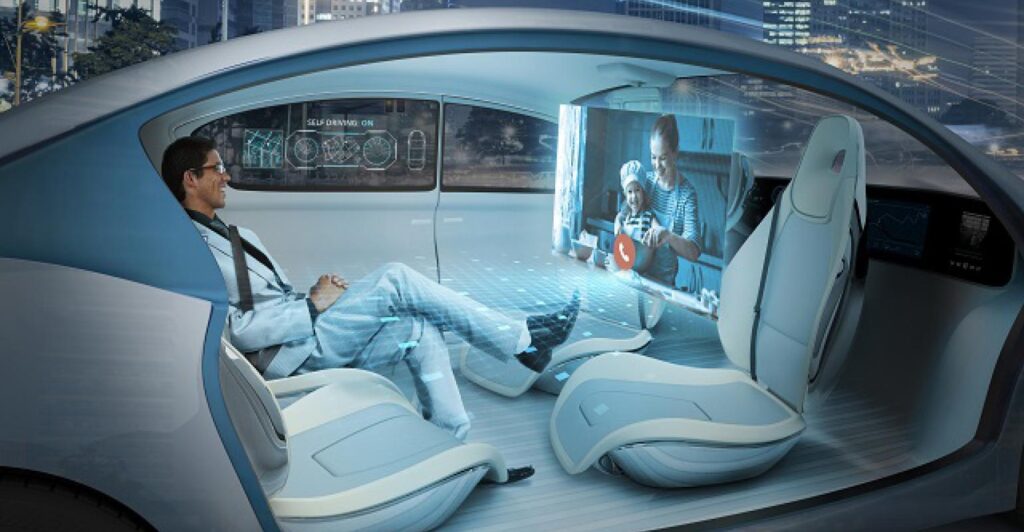Self-driving or driverless cars are undergoing evolution every year to make them more acceptable to consumers in the automobile market. From Tesla to Volvo, different automobile brands have invested a significant amount in designing these innovative cars. They want to make self-driving automobiles road-worthy. If more consumers start running autonomous cars, there may be a transformation in the layouts and legislation. Let us share some amazing facts about self-driving vehicles.
Facts about self-driving vehicles
Road infrastructure is important for running self-driving vehicles efficiently
Autonomous technology for cars will be effective only if the road infrastructure is properly developed. These cars have laser, camera, or radar-based guidance to check the environment. However, more processing power is needed if the driving situation is highly complex. The functional value of driverless vehicles depends on the road infrastructure quality and the potential to manage the driving environment.
For instance, if the signage’s clarity and the road markings’ quality deteriorate, autonomous cars will find it more challenging to run on the highway.
Furthermore, rural areas in Canada and other countries have narrow lanes, where you cannot operate autonomous vehicles smoothly. Most lanes in these regions have no white lines.
So, it is essential to overcome these challenges to let autonomous cars run smoothly on the road.
No steering wheels in autonomous vehicles
Early, federal rules stated that autonomous cars must have steering columns with steering wheels and a dedicated driver’s seat. But, it is now legally acceptable if self-driving cars are designed and produced without steering wheels. So, they are different from traditional cars, which have pedals and steering wheels. Manufacturers use the space to add other features that make the cars more functional. They want to create a unique design for autonomous cars that will reduce the risk of crashes.
When the tech giant, Google first declared its plan, Christ Urmson (the project director) stated the vehicles would have no pedals and steering wheels. So, the company can now progress with this plan without legal issues.
Zoox, a prominent autonomous car development company, introduced a self-driving robotaxi without steering wheels.
You can summon your self-driving car
Not every autonomous vehicle comes with the Summon feature. However, it would be interesting if you could call your car using your smartphone. You need to set the location where your autonomous car will arrive.
Tesla has already integrated this feature into its car. But, the company announced that the Smart Summon feature is intended to be used only in particular situations. Suppose you have forgotten where you have parked the car. In this case, you may click a button and summon the car.
Self-driving cars will reduce collision risks
Autonomous cars have the potential to improve road safety and reduce the risk of collisions. They rely on cameras, ML algorithms, and sensors to make decisions. Self-driving cars can automatically operate lights and window wipers. Moreover, onboard processing capabilities and advanced sensing devices have made these autonomous vehicles highly efficient.
So, human drivers do not need to make several inputs to run the cars. The flexible windscreen and foam bumper inside the car are the most important features for safety. They can absorb impact to save you from the risk of injury. You will also feel safe during every ride.
No visibility issues while running driverless cars in the dark
The older self-driving car models faced challenges with visibility during nighttime driving. However, car makers are trying to solve the problems by integrating innovative technologies. For instance, Digital Matrix LED lighting technology in Audi autonomous cars has several microscopic mirrors and front-facing cameras to manage the brightness and direction of headlights. Glare from other oncoming headlights can also be reduced easily.
Some autonomous cars need headlights for lamps in the street. For instance, a driverless vehicle of Ford can run 60 mph without light.
Your existing car may have some autonomous features
A fully driverless car technology is far from reality. Still, the line differentiating self-driving and standard cars is blurring. Many automotive makers have equipped their cars with laser technologies, GPS, and sensors to allow automation. Moreover, there are various autonomous levels in self-driving cars. Level 0 means there is no automation in the car. On the contrary, level 8 indicates that the driver will act as the passive passenger.
So, check the autonomous level when you buy self-driving cars.
Some popular driverless car brands in the market
Reputed brands in the automobile market have thought of introducing different self-driving cars with unique features.
Kia
Kia started testing Level 4 driverless cars and aimed to release the technology during car production. But, it knows that the Level 4 cars will run efficiently only in smart cities. The company has invested several dollars in researching driverless technology.
Mercedes
The partnership between Mercedes and BMW will lead to the development of Level 4 self-driving cars. The German automaker also released an all-electric EQS concept that would draw the attention of consumers. Moreover, Mercedes is currently backing autonomous technology for ride-sharing. The brand acquired a stake in the ride-sharing company, Uber.
Honda
Honda is another prominent brand that has planned to launch Level 3 and Level 4 self-driving vehicles in the coming years. It has disclosed only a little information about its projects. The company has also thought of launching a new, classic-style all-electric hatchback.
Jaguar Land Rover
This car brand has progressed with its self-driving car development programme. It has been testing its autonomous models since 2017 and declared the launch of an autonomous-vehicle-compatible 3D head-up display.
Conclusion
Autonomous vehicles do not mean everything will be robotic. Functions in autonomous cars will operate at various levels. Almost every vehicle in the current market has a number of automatic systems. Still, self-driving cars are quite different from standard human-driven models. Facts about self-driving vehicles will make you feel more interested in these cars.

